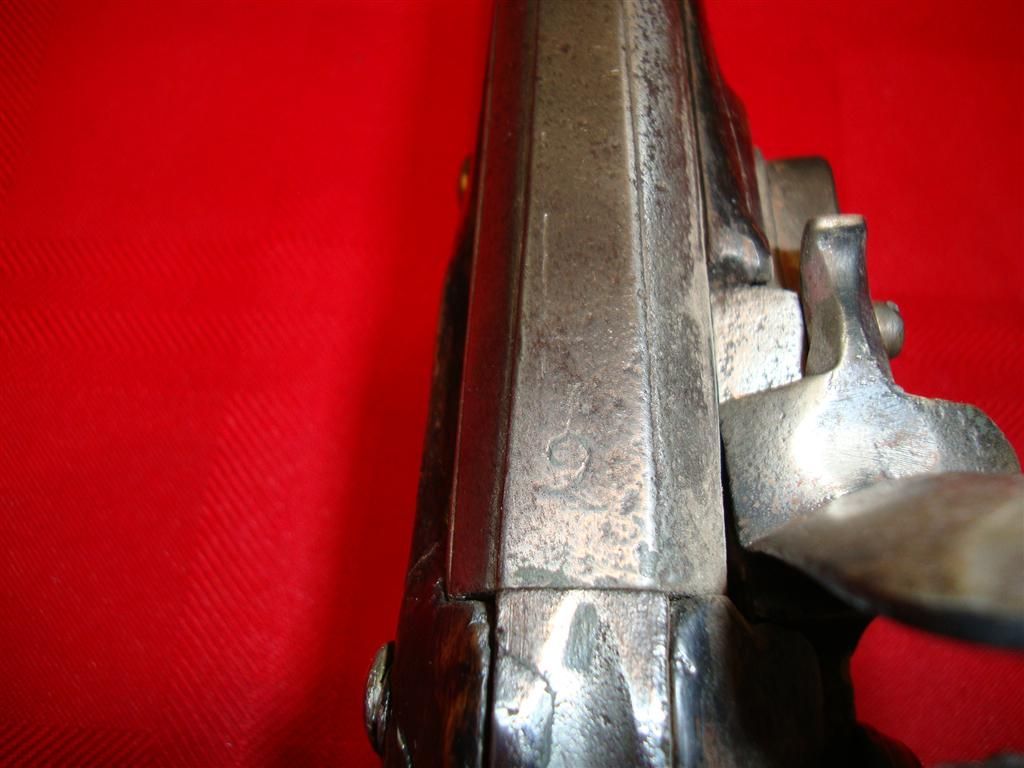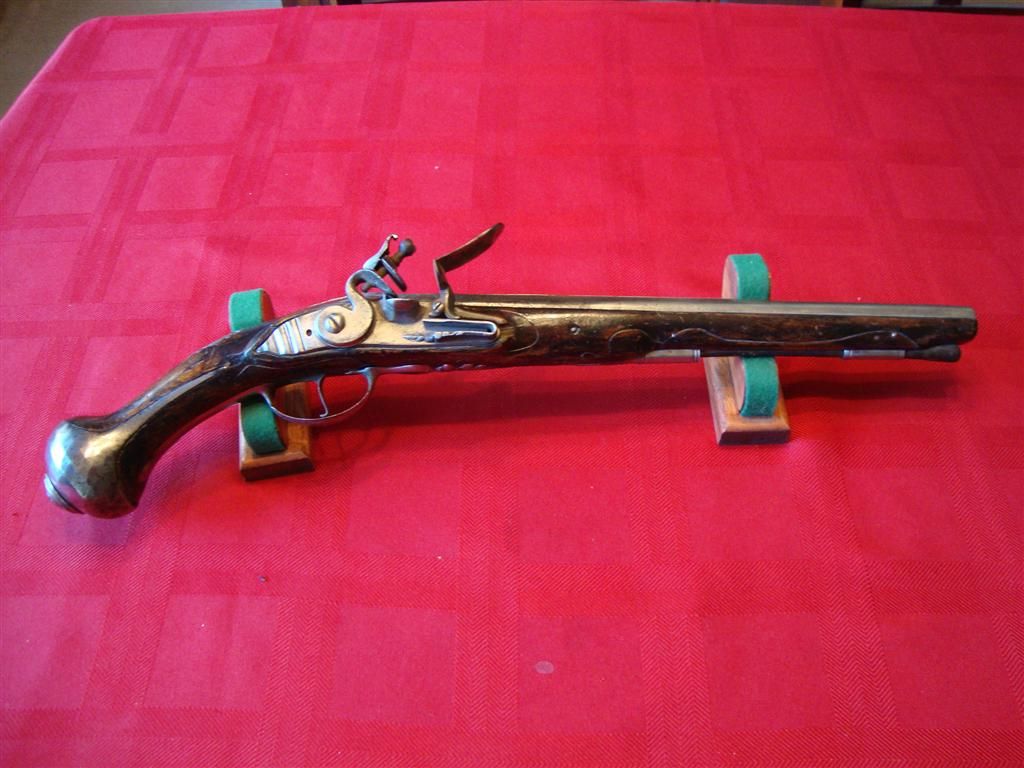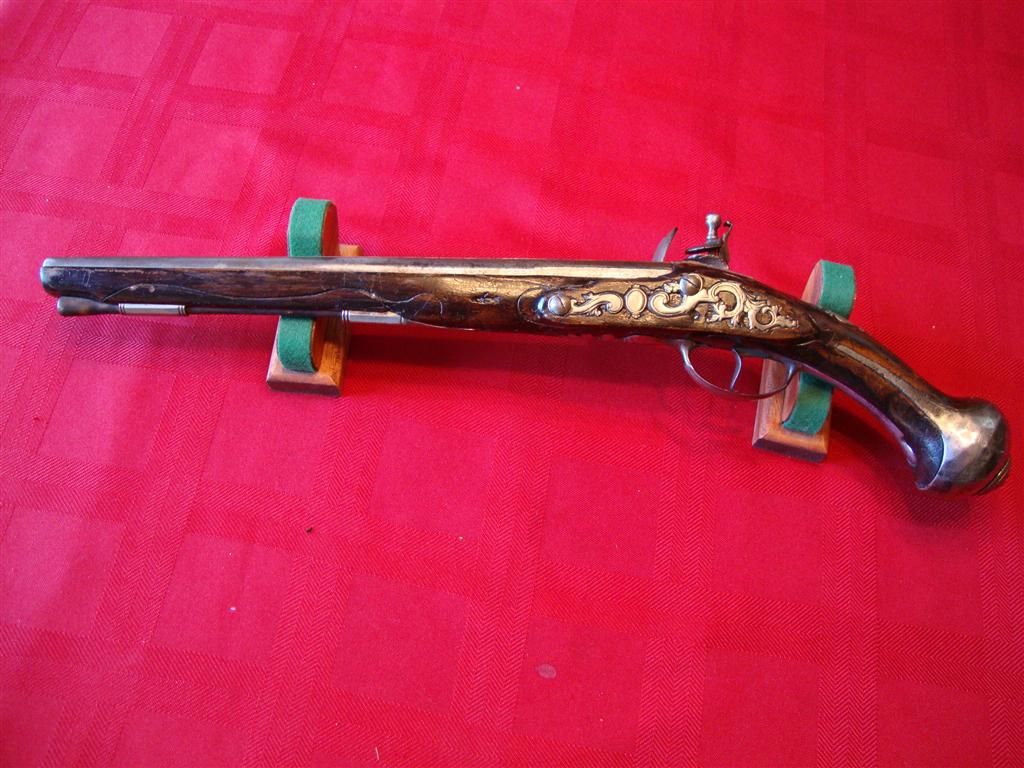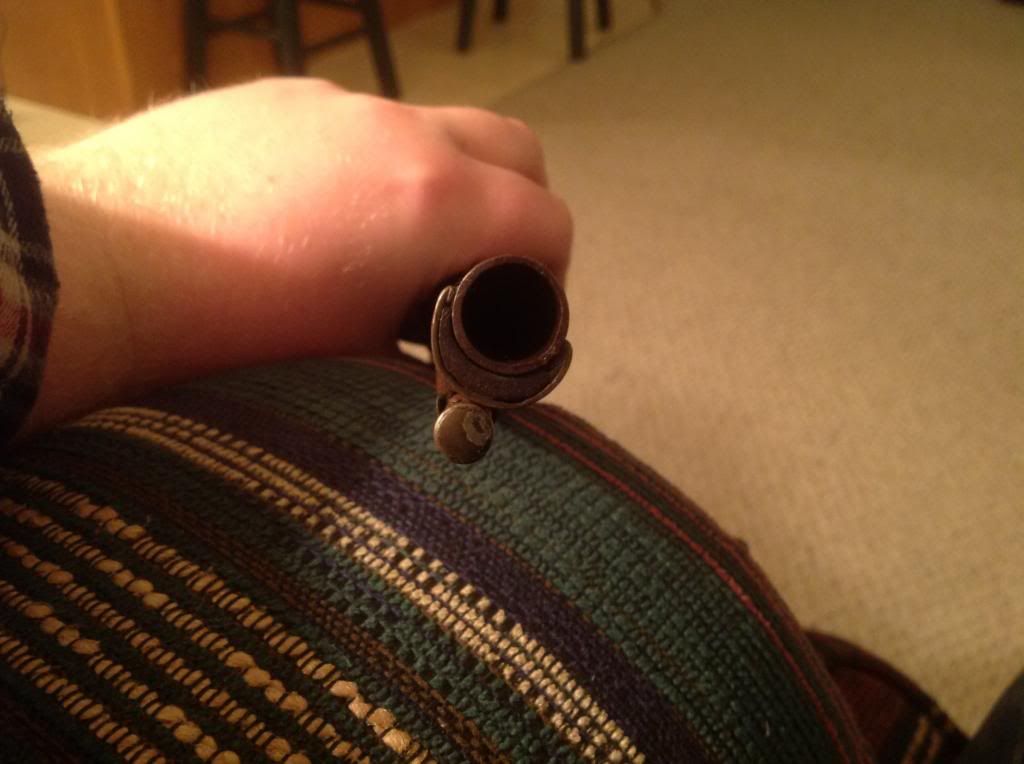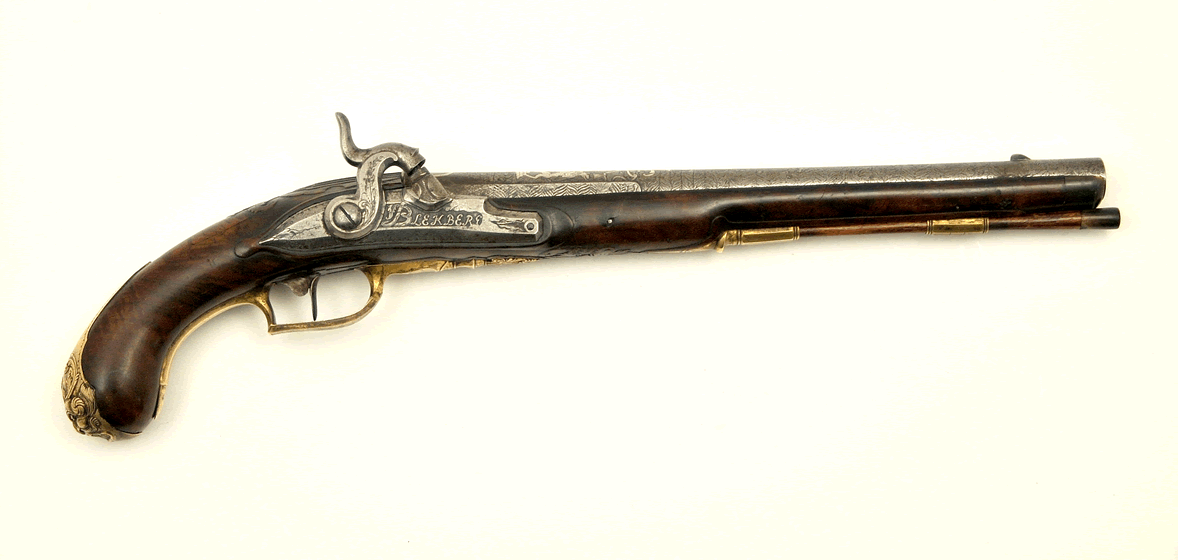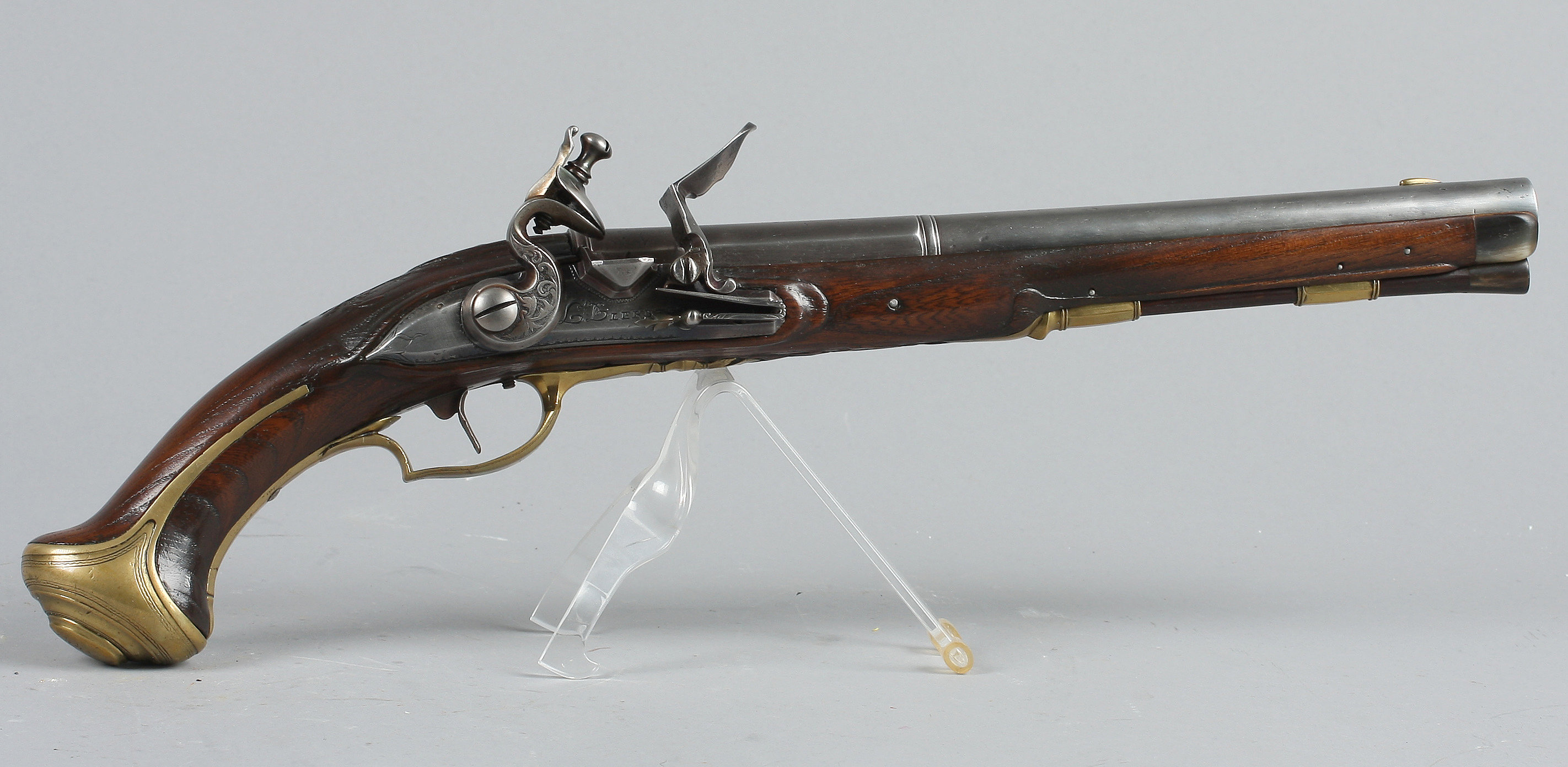Hello Gents,
I was wondering if you might be so kind as to provide me with a little guidance on the origins of this unmarked Flint Pistol I bought off Gunbroker a few years agod. I've attached some photos for your examination. The pistol is roughly .40 cal and completely unmarked save for a small number "2" engraved on the tang behind the screw (I couldn't get a good picture of it). I've reviewed all my reference material and checked with several local experts but nobody's seen anything quite like it. It seems to have some English influences in its overall profile but the nose cap and "square backed" trigger guard have me stumped. I've had the barrel and lock out and there are no marks to be found anywhere Have any of you seen anything similar to this? Any help would be immensely appreciated.
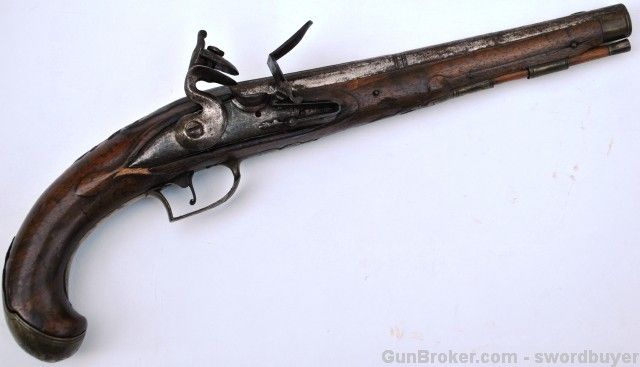
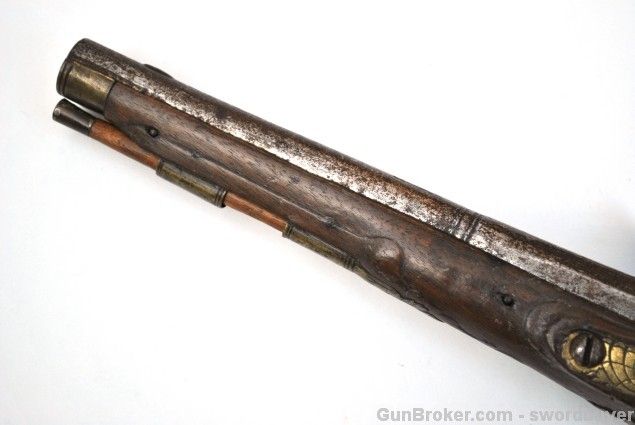
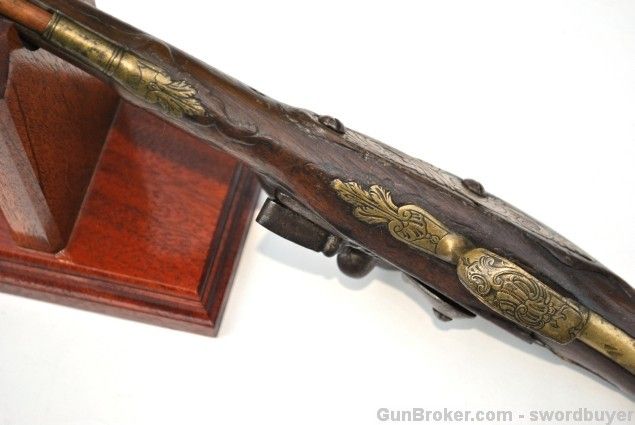
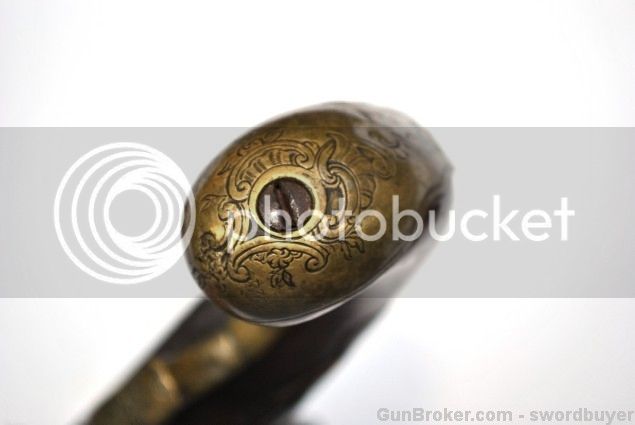

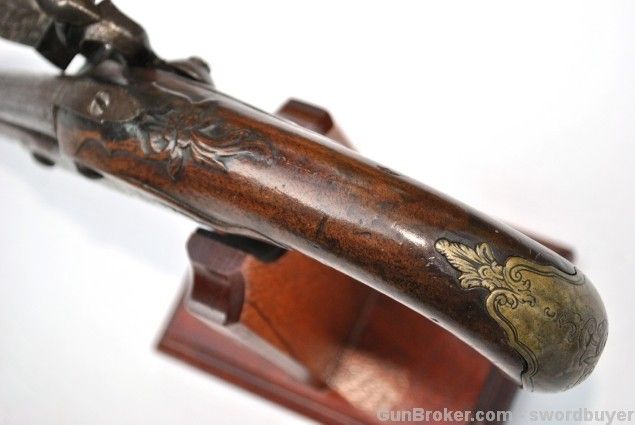
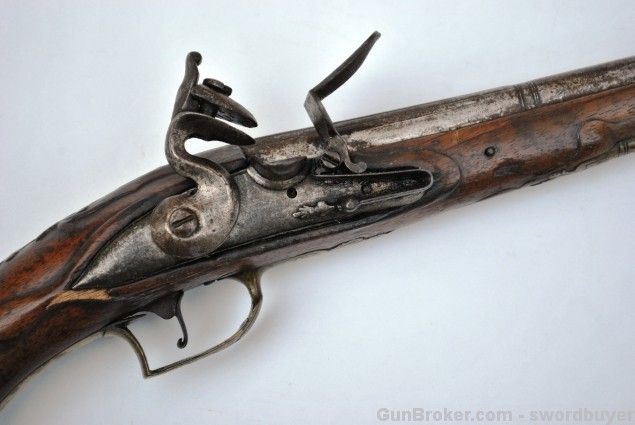
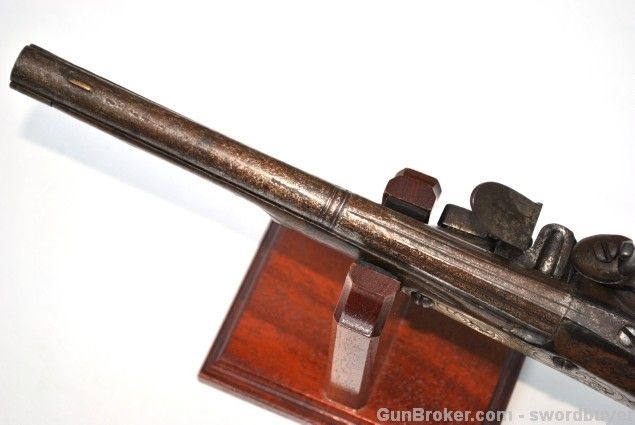
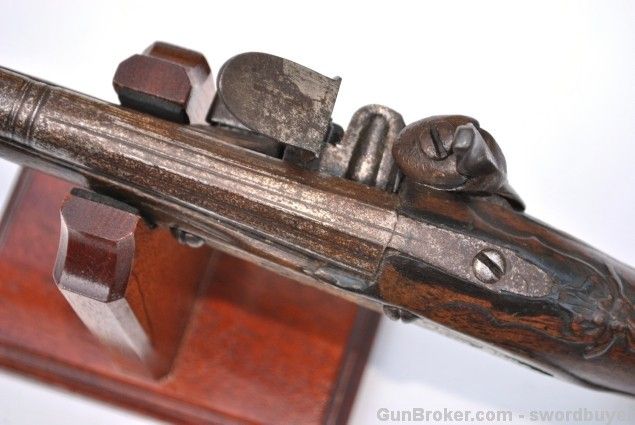
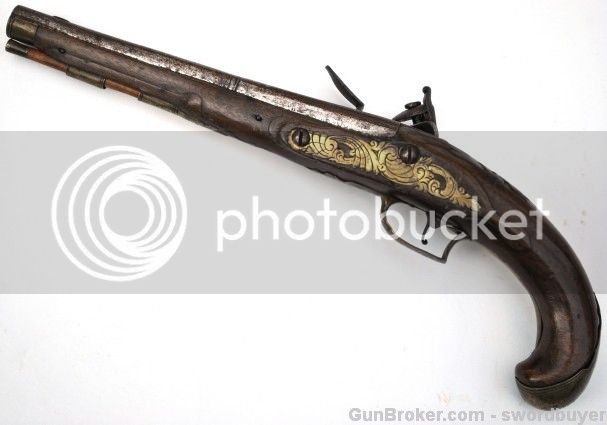
I was wondering if you might be so kind as to provide me with a little guidance on the origins of this unmarked Flint Pistol I bought off Gunbroker a few years agod. I've attached some photos for your examination. The pistol is roughly .40 cal and completely unmarked save for a small number "2" engraved on the tang behind the screw (I couldn't get a good picture of it). I've reviewed all my reference material and checked with several local experts but nobody's seen anything quite like it. It seems to have some English influences in its overall profile but the nose cap and "square backed" trigger guard have me stumped. I've had the barrel and lock out and there are no marks to be found anywhere Have any of you seen anything similar to this? Any help would be immensely appreciated.
















